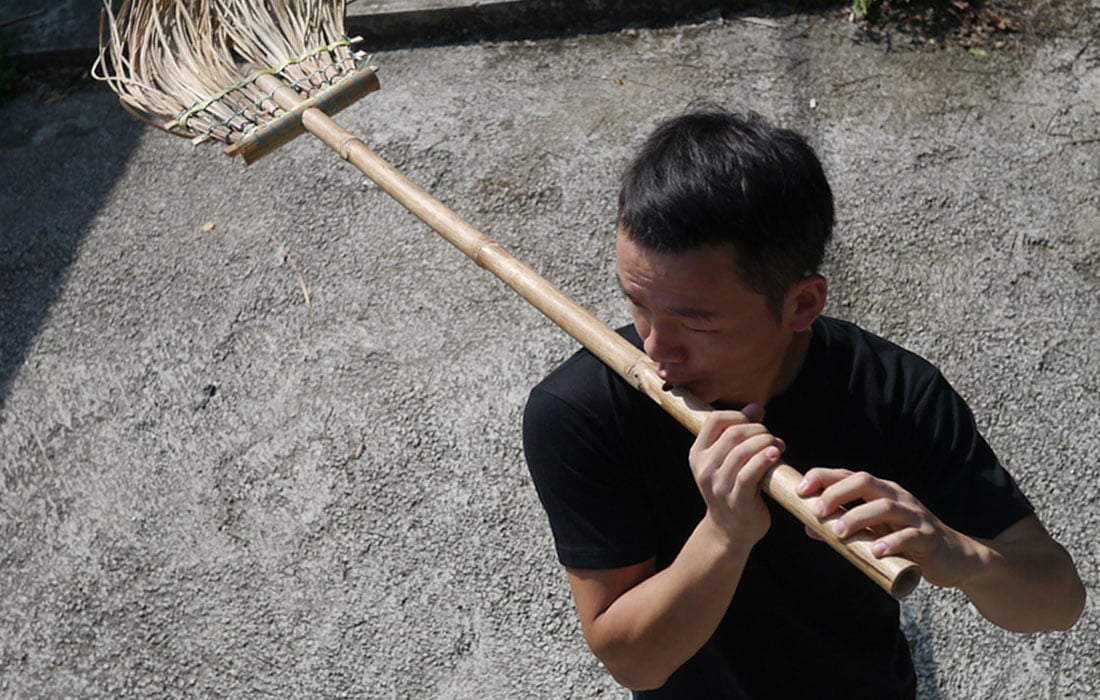
Into the unknown
A touring exhibition in Hong Kong is encouraging young people to change the way they think about sustainability, writes Joego Chan.
Sustainable development is a pressing topic of discussion in contemporary society. The role of the museum in conversations on sustainability – and specifically of making use of what we have – may be to expand the imagination rather than to propose solutions. As a museum of visual culture that will open in Hong Kong soon, M+ seeks to explore new possibilities, beyond the boundaries of the physical institution.
He reinterprets and reshapes ordinary objects, instilling them with new functions and meanings
M+ Rover, a travelling exhibition space and creative studio, is one of the most important ways that the museum does this. Beginning in 2016 as a school and community outreach programme, the customised trailer tours to local secondary schools and community spaces. Last year, it was on the road from February to June. The programme is free and schools receive an original M+ resource pack with activities that promote the creative spirit of M+ Rover.
It is like a space expedition to an unknown planet, taking students into uncharted creative territory. The programme emphasises participatory art practice and collaboration between students and artists, and offers an experience of the creative processes of contemporary visual culture that encourages interpersonal interactions, dialogue and the exploration of new possibilities.
The exhibition evolves as it travels from school to school and as students contribute to the ever-changing show. The exhibition is open to all staff and students on the activity day, and participating students can also visit community spaces with M+ Rover and initiate a dialogue with the public.
Remoulding everyday objects
Each year we commission local cultural practitioners to participate in the programme. For last year’s programme, we partnered with the artist Ng Ka Chun for the exhibition ‘Thing beyond Things’ and demonstrated how one can envisage a different, sustainable society through artistic creation.
Ng invited students to remould everyday objects, freeing them from a singularity of purpose. He reinterprets and reshapes ordinary objects, instilling them with new functions and meanings. He shows us how sustainability can begin with a shift in our thinking. In Ng’s hands, the handle of a bamboo broom is transformed into a flute; the teeth of a comb are ‘parted’ halfway, enabling the user to part their hair; and an IKEA plastic chair is fashioned into a rocking chair.
According to Ng: “With the mass production of industrial society, many things have become homogeneous. As we do not communicate with these products and objects, we no longer cherish the objects in our possession. If a product or object is recreated to embody unique characteristics, it will have new values.”
Ng believes the imagination is the most powerful tool. He engaged students in group games that stimulated their thinking about transcending the functional dimension of objects to create new values and meanings that lie beyond convention.
Using limited materials and simple tools, students recombined the objects or materials on hand through a process of bricolage, with a view to addressing issues in everyday life. Ng insists that we must change our concept of objects in order to cherish them.
A student remarked after participating in the project that “an object does not necessarily have fixed functions. Rather, it can be adapted for different purposes and respond to people, as it is used by different people in their everyday lives”. When one breaks free from preconceptions, the limitations on the functions of an object fall away.
Sustainable living
The question of how we make use of limited resources to address real needs, and the power of creative thinking to respond to this question, resonate deeply with the role of the museum in Hong Kong. We are led to define alternative perspectives, and to find the tools we need to create a better way of living together sustainably.
In the autumn, M+ Rover will take to the road again and visit schools and community spaces across Hong Kong. Before the opening of the M+ building in 2020, we continue our exploration of the possibilities of the museum in the twenty-first century.
Joego Chan is Assistant Curator, Learning and Interpretation of M+.
www.westkowloon.hk/en/mplus
For a video on the M+ Rover 2018 programme highlights click here.
Join the Discussion
You must be logged in to post a comment.